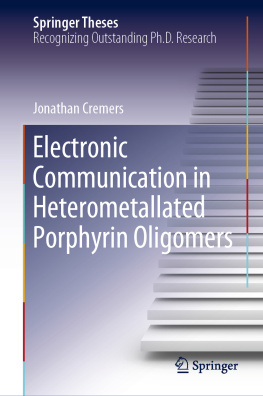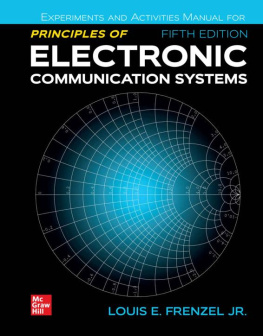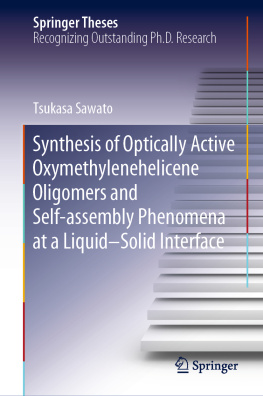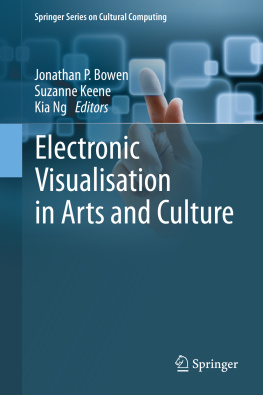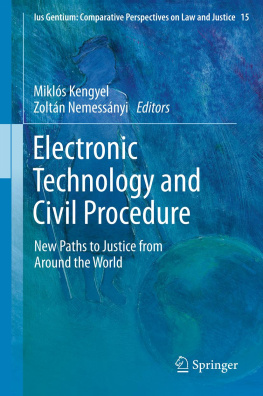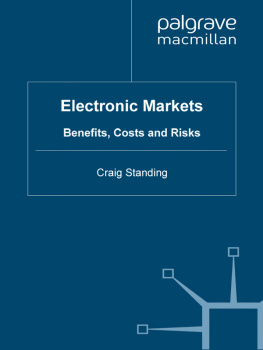Jonathan Cremers - Electronic Communication in Heterometallated Porphyrin Oligomers
Here you can read online Jonathan Cremers - Electronic Communication in Heterometallated Porphyrin Oligomers full text of the book (entire story) in english for free. Download pdf and epub, get meaning, cover and reviews about this ebook. year: 2020, publisher: Springer International Publishing, genre: Home and family. Description of the work, (preface) as well as reviews are available. Best literature library LitArk.com created for fans of good reading and offers a wide selection of genres:
Romance novel
Science fiction
Adventure
Detective
Science
History
Home and family
Prose
Art
Politics
Computer
Non-fiction
Religion
Business
Children
Humor
Choose a favorite category and find really read worthwhile books. Enjoy immersion in the world of imagination, feel the emotions of the characters or learn something new for yourself, make an fascinating discovery.
- Book:Electronic Communication in Heterometallated Porphyrin Oligomers
- Author:
- Publisher:Springer International Publishing
- Genre:
- Year:2020
- Rating:4 / 5
- Favourites:Add to favourites
- Your mark:
- 80
- 1
- 2
- 3
- 4
- 5
Electronic Communication in Heterometallated Porphyrin Oligomers: summary, description and annotation
We offer to read an annotation, description, summary or preface (depends on what the author of the book "Electronic Communication in Heterometallated Porphyrin Oligomers" wrote himself). If you haven't found the necessary information about the book — write in the comments, we will try to find it.
Electronic Communication in Heterometallated Porphyrin Oligomers — read online for free the complete book (whole text) full work
Below is the text of the book, divided by pages. System saving the place of the last page read, allows you to conveniently read the book "Electronic Communication in Heterometallated Porphyrin Oligomers" online for free, without having to search again every time where you left off. Put a bookmark, and you can go to the page where you finished reading at any time.
Font size:
Interval:
Bookmark:
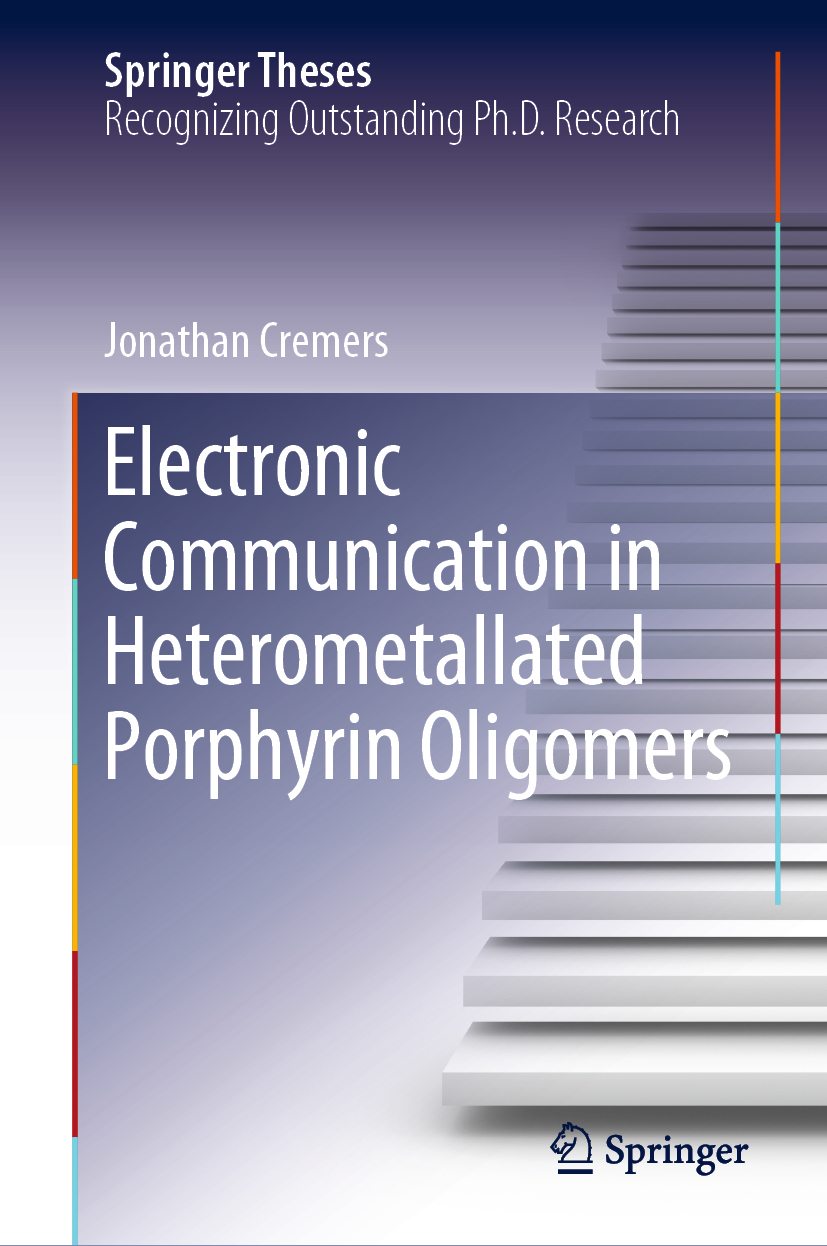
Aims and Scope
The series Springer Theses brings together a selection of the very best Ph.D. theses from around the world and across the physical sciences. Nominated and endorsed by two recognized specialists, each published volume has been selected for its scientific excellence and the high impact of its contents for the pertinent field of research. For greater accessibility to non-specialists, the published versions include an extended introduction, as well as a foreword by the students supervisor explaining the special relevance of the work for the field. As a whole, the series will provide a valuable resource both for newcomers to the research fields described, and for other scientists seeking detailed background information on special questions. Finally, it provides an accredited documentation of the valuable contributions made by todays younger generation of scientists.
They must be written in good English.
The topic should fall within the confines of Chemistry, Physics, Earth Sciences, Engineering and related interdisciplinary fields such as Materials, Nanoscience, Chemical Engineering, Complex Systems and Biophysics.
The work reported in the thesis must represent a significant scientific advance.
If the thesis includes previously published material, permission to reproduce this must be gained from the respective copyright holder.
They must have been examined and passed during the 12 months prior to nomination.
Each thesis should include a foreword by the supervisor outlining the significance of its content.
The theses should have a clearly defined structure including an introduction accessible to scientists not expert in that particular field.
More information about this series at http://www.springer.com/series/8790

This Springer imprint is published by the registered company Springer Nature Switzerland AG
The registered company address is: Gewerbestrasse 11, 6330 Cham, Switzerland
This thesis summarises work that Jonathan Cremers carried out in my laboratory in Oxford during the period October 2014 to November 2017. At the start of the project, there were two general aims: (a) to investigate the synthesis and properties of heterometallated porphyrin oligomers,i.e.molecules consisting of several porphyrin units, bound to different metal cations, and (b) to investigate the application of these compounds as single-molecule electronic components, particularly single-molecule transistors, in collaboration with Professor Andrew Briggs (University of Oxford, Department of Materials). As the project evolved, the first of these areas proved to be so fruitful that it became the main subject of Jonathans thesis. The fabrication of single-molecule devices was taken over by other members of the group, but a fascination with molecular electronic communication pervades the whole of Jonathans thesis. This is illustrated by the results on heterometallated porphyrin oligomers presented in Chap., which show that exchange coupling between paramagnetic metal centres around a porphyrin nanoring (diameters 2.5 nm) exhibits constructive quantum interference. This result is significant because it indicates that quantum interference will also control charge transport through these molecules, which could lead to a new type of low-power transistor.
Porphyrins are important for many different reasons. They occur widely in Nature, for example, as iron porphyrins (haem) in blood and magnesium porphyrins (chlorophylls) in green plants. Almost every metallic element can be inserted into a porphyrin, and changing the coordinated metal is an excellent way to tune the chemical and physical properties of these molecules. Porphyrins are promising components for molecular electronics because of their synthetic accessibility, structural versatility, stability and easy oxidation or reduction. Jonathans thesis focuses on just three metals: zinc, magnesium and copper, all of which form porphyrin complexes in the 2+ oxidation state. Zinc complexes are the most widely studied metalloporphyrins because of their stability, diamagnetism, which facilitates characterisation by NMR spectroscopy, and ability to bind axial ligands, which leads to possibilities for supramolecular assembly. Magnesium porphyrins are similar to the zinc complexes, but they are more easily demetallated; Jonathan demonstrated that this makes them useful synthetic intermediates. Copper porphyrins are paramagnetic, and Chap.of the thesis illustrates how long-range CuCu dipolar coupling can be measured by electron paramagnetic spectroscopy (EPR) and used to gain structural information.
The most significant achievement in this thesis is probably the synthesis of ten-porphyrin and 14-porphyrin nanoballs in Chaps.. These fully -conjugated geodesic structures are reminiscent of fullerenes and they provide interesting models for the light-harvesting chlorophyll arrays used in synthesis. The template-directed strategies that Jonathan developed for constructing these molecules should provide access to other related nanocages.
One of the criteria for awarding a Ph.D. at most universities is that the candidate must have made a significant and substantial contribution to a field of learning. At the start of a Ph.D., this can seem daunting. In a world where peer-reviewed chemistry articles are published at a rate of about 1000 per day, how can any student hope to make a significant contribution? This thesis illustrates how three years of work by one student has slightly, but significantly, changed the way we think about chemistry.
Font size:
Interval:
Bookmark:
Similar books «Electronic Communication in Heterometallated Porphyrin Oligomers»
Look at similar books to Electronic Communication in Heterometallated Porphyrin Oligomers. We have selected literature similar in name and meaning in the hope of providing readers with more options to find new, interesting, not yet read works.
Discussion, reviews of the book Electronic Communication in Heterometallated Porphyrin Oligomers and just readers' own opinions. Leave your comments, write what you think about the work, its meaning or the main characters. Specify what exactly you liked and what you didn't like, and why you think so.

